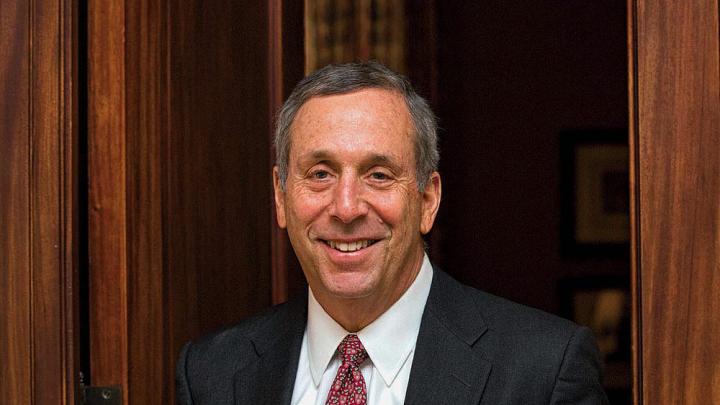I am more of a runner than a rambler—measuring my time outdoors in miles rather than moments—but life in pandemic mode has forced me to slow down and look for opportunities to exit my COVID cocoon and engage with the world. The best walk I have taken since March 2020 was a long stroll with Adele, through the Arnold Arboretum. The 281-acre landscape designed by Frederick Law Olmsted is a shining jewel in Boston’s “Emerald Necklace,” comprising more than 15,500 individual woody plants, including celebrated holdings of beech, forsythia, ginkgo, hemlock, hickory, maple, and lilac. Wending our way through this beautiful place, we were struck by how many other people had the same idea—enjoying open space and connecting with nature and with one another. It was an affirmation of life during an otherwise difficult time.
When we returned home, I wrote Ned Friedman, director of the Arboretum and Arnold Professor of Organismic and Evolutionary Biology, to tell him how much we had enjoyed our impromptu visit. He immediately invited us to return for a personal tour, and we later spent two wonderful hours in his company, learning about horticulture and Harvard’s extraordinary living museum holdings. At the end of our visit, Ned suggested the addition of unique plantings at the president’s residence to give the Arboretum new roots in Cambridge. In November, a Metasequoia glyptostroboides—or dawn redwood—was planted on the grounds of Elmwood. A rare conifer that drops its needles in the fall, the tree was believed to be extinct until it was rediscovered in China in the early 1940s, formally described by an Arnold Arboretum-trained Chinese scientist and reintroduced to the world as a “living fossil” in 1946. Its cycles of growth and change, as well as its endurance through time, remind me of the University itself, and I keep in Mass Hall the shovel I used at the planting to remind me of the stunning diversity of excellence that Harvard represents.
My own experience offers just a glimpse of the Arboretum and its research mission, which is driven and supported by its living collections as well as a 1.5-million-specimen herbarium, a horticultural library and archives, and state-of-the-art equipment and laboratories. Disciplines represented by its scientists, postdocs, interns, and fellows include organismic and evolutionary biology, molecular and developmental biology, plant physiology, evolutionary biology, and ecological, environmental, and biodiversity studies. Much of their work is undertaken at the Weld Hill Research Building. Home to the largest solar array at the University and a critical component of our efforts to become fossil-fuel-free by 2050, the facility receives thirty percent of its energy from 1,152 ground-mounted solar panels that are underplanted with pollinator-attracting meadows. These features enable us to reduce our impact as we study the effects of climate change, among them persistent threats to biodiversity and to human health and well-being in our community and elsewhere.
Since its establishment in 1872, the Arboretum has been about plants and people, imagined and preserved as a democratic space where individuals can encounter the grandeur and splendor of the natural world. Thanks, in part, to a partnership with the City of Boston, it is open and accessible to all—and free to all—every day of the year from dawn to dusk. In a typical year, it draws thousands and thousands of public-school students of every age who work to expand their knowledge of plant science alongside a dedicated community of educators and volunteers. But how many people take advantage of this remarkable open space independent of its educational programs? A recently installed electronic turnstile at one of the preserve’s 16 entrances is providing data to help answer that question. In two years’ time, more than 1.5 million visitors have entered the Arboretum from that single point, putting conservative estimates of annual visitors somewhere around 4 or 5 million.
This year, the Arnold Arboretum celebrates its 150th anniversary, as beautiful and as vital a part of the University as it has ever been. For me, it represents our aspirations—not only for teaching and scholarship, but also for serving as a resource for all of Boston—in ways that are deeply felt. Gazing up the peeling trunks of dawn redwoods or watching the spinning descent of samaras from maple trees, one feels connected to the earth and inspired to look upon nature in all of its many forms with awe and with gratitude.
Sincerely,
Lawrence S. Bacow
President







